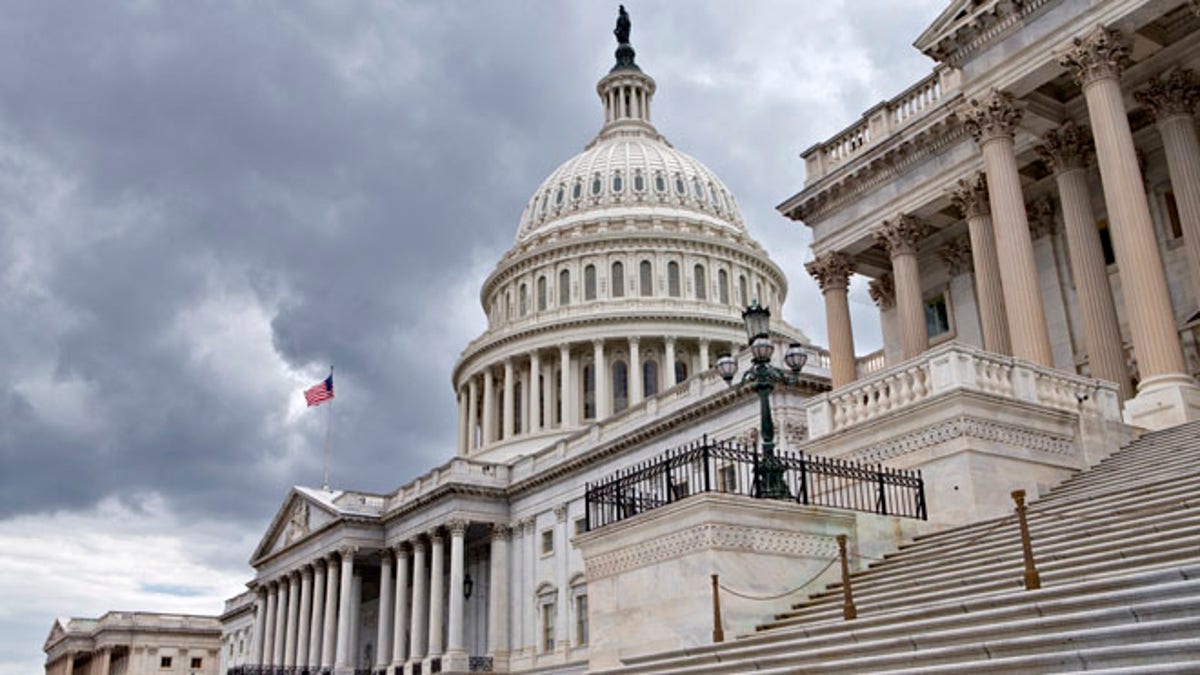
FILE -- July 23, 2013: The Capitol Dome in Washington, DC. ((AP))
Imagine spending four hours a day, three days a week tethered to a dialysis machine just to survive. For many of the more than 20 million Americans—one out of every 10 adults—who suffer from chronic kidney disease (CKD), that life isn’t theoretical. It’s their daily reality.
But all taxpayers, not just those with kidney problems, have a reason to support a drastic increase in government funding for research: We, the taxpayers, are spending tens of billions each year to treat patients with kidney disease—the nation’s ninth-leading cause of death—and yet we are investing very little in trying to cure it.
Every year, the federal government spends $80 billion through Medicare alone to treat CKD (and the real cost to taxpayers is much higher when we count spending through dozens of other programs), but the National Institutes of Health are able to devote less than 0.8% of that amount to research to prevent or cure it.
To make matters worse, the costs of treating CKD are increasing rapidly. Between 2008 and 2012, Medicare spending on CKD patients increased at a rate almost five times as fast as the rest of the program and now makes up one-fifth of all Medicare Parts A and B expenditures. Costs increase as patients progress through the disease, with a dialysis patient requiring nearly $90,000 per year. This makes end stage renal disease one of the most expensive chronic diseases.
Put another way, every patient kept off of dialysis saves taxpayers $250,000.
If we fail to solve this problem, then by 2030, one out of every six American adults will have CKD.
Take for example the particular form of CKD that one of us (Bill) inherited from his father. The NIH spends $41 million on polycystic kidney disease (PKD) research per year. Having sent 5,000 patients to the transplant list, PKD costs taxpayers 50 times more than that— $2 billion—annually via Medicaid and Medicare alone.
Of course, this total does not include the lost productivity of workers forced to retire early. Only 20 percent of the people on dialysis of working age have jobs. Nor does it account for the toll of the disease on caretakers, nor the devastation that too many early deaths wreak on families.
Bill’s cousin Michael, a successful sales executive suffering from PKD, was torn from his family at the age of 35, leaving two young children to grow up without a father.
A treatment to slow the progression of PKD may now be close at hand. Thanks to research funded in part by the NIH and in part by the PKD Foundation, Bill is taking an experimental drug already approved for use in the European Union, the U.K., Japan and Canada. With just a little more spent on PKD research, even better treatments could soon follow, saving billions for years to come.
PKD is just one of more than 200 costly kidney diseases. For each, research is severely underfunded. An additional $1.5 billion over ten years could significantly reduce the $80 billion taxpayers are paying each year through Medicare to manage them. Simply delaying the onset of such illnesses by a few years would save American taxpayers billions of dollars annually—forever.
It is hard to imagine a smarter, and more compassionate, fiscal policy.
Kidney disease, of course, represents just one of many debilitating conditions for which the NIH funds crucial basic research. Heart disease, cancer, stroke, arthritis, Alzheimer’s—swifter progress toward cures would benefit all of those who suffer from these terrible diseases, to say nothing of taxpayers at large.
We have proposed doubling the NIH budget to $60 billion and reforming it to reduce bureaucracy, focus resources on basic research for the most expensive and prevalent health problems, and give the director more flexibility to redirect funds where they are urgently needed.
Leaders in both the House and Senate have taken important steps in this direction. The new budget deal passed by the House would boost NIH’s budget by $2 billion, the largest increase the NIH has received in 12 years. That’s a great first step.
Moreover, the 21st Century Cures Act, which recently passed the House 344-77, is a bipartisan effort to promote medical discoveries using the newest technology.
Now before the Senate, this bill, among other provisions, mandates $10 billion in new NIH funding over the next five years. Furthermore, Reps. Diana DeGette, D-Colo. and Dr. Michael C. Burgess, R-Texas, have called for the Congressional Budget Office to factor in the savings from preventive health measures when assessing the financial impact of proposed legislation.
In the Senate, Lamar Alexander of Tennessee, Ron Johnson of Wisconsin, and Jerry Moran of Kansas, all Republicans, have championed increased funding for basic research. Others, including Charles Schumer, Democrat from New York, have advocated increased funding for medical research in general and kidney disease in particular.
Medical research is a bipartisan value, but Congress needs to know that its constituents care. One of the best things you can do for your health and for that of your loved ones is to call on your congressional representatives to double the NIH budget on an ongoing basis.
In the short run, ask your senators to approve the 21st Century Cures Act’s increased funding for NIH so that researchers will know they can count on the money and continue to take the kinds of big risks that lead to big cures.
